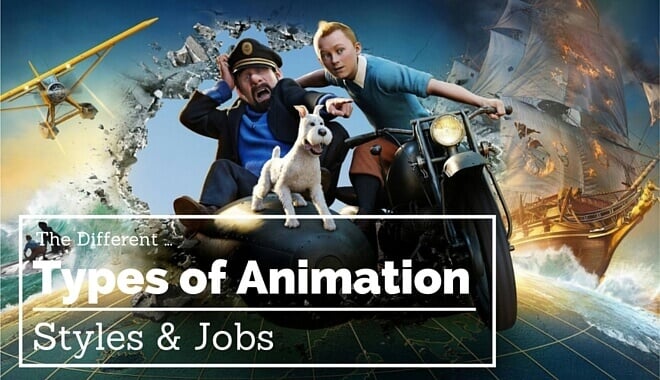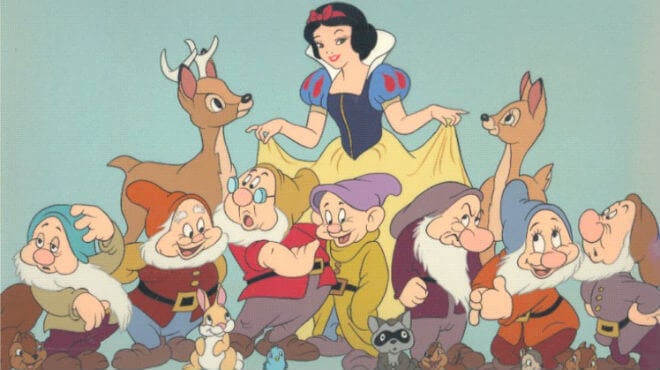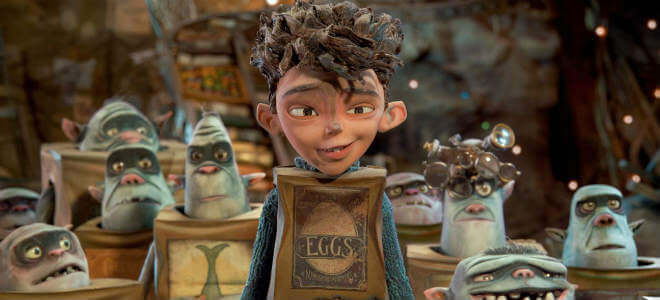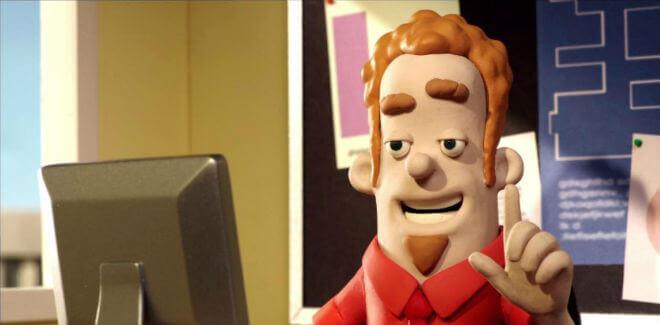
When it comes to jobs that require a combination of skill, boundless creativity, and passion, few can compare to animation.
Animators are the ones who bring ideas to life so that others may enjoy stories and characters not possible in real life.
Animation has been around for a while now and many new types of techniques have been introduced, which means animation studios and companies all over the world are looking for talented individuals who have what it takes to master them.
Below you’ll find information on the two main types of animation techniques as well as a few less relevant methods.
Whether you end up making digital 2D animations for movies and TV shows or environments for games, we hope this helps guide you down the animation path that’s perfect for you.
2D Animation Styles

What is 2D Animation?
2D animation is when scenes and characters are animated in a 2D space instead of a 3D environment.
Today, artists use computer software to create everything in a 2D animation, including environments, characters, visual effects, and more.
For most of the 20th century, the animation was done by taking photographs of drawings on paper and then placing them on transparent acetate sheets called cels.
This process was abandoned with the introduction of computers, which allows artists to create digital animations and then use techniques to manipulate the image. Compared to drawing multiple images, using computers is far less time-consuming and effective.
Although drawing skills are still required to be a 2D animator today, most of the work is done with the use of computer software.
These programs often have a huge toolbox of features that help the artists manipulate the animation in a number of ways, including making it look smoother by fine-tuning important elements such as timing.
Other advantages of 2D animation over the traditional way include being able to save and load work. Being able to do so proves very handy if something didn’t work and you need to revert back to an earlier version of the animation.
Being skilled in a particular 2D animation program also allows you to make good use of a vast library of visual effects.
Of course, every 2D animation software comes with its own learning curves, which only get steeper the better the program is.
Knowing what each tool does and how to use it effectively is essential if you want to be a good 2D animator that isn’t limited to a few techniques.
Notable 2D Animation Programs
- Toon Boom Studio
- Autodesk’s SketchBook Pro
- Anime Studio Debut
- DrawPlus
- FlipBook Lite
- Adobe Photoshop
- The TAB Pro
- CrazyTalk Animator
- MotionArtist
- Flip Boom Cartoon
Where is 2D animation used?
2D animation is widely used in a number of creative industries and is still widely used despite the rise of 3D animation.
Everything from cartoon series and Japanese anime to video games and full feature films are done in 2D. The fact that 2D animation is flexible enough to be done on a wide range of platforms it what makes it such a popular form for anything from entertainment and multimedia to broadcast video.
Television is where 2D animation is still used the most.
The number of shows that have been made with 2D animation is near-endless, with some of the more well-known ones being The Simpsons, SpongeBob Squarepants, South Park, and Avatar: The Last Airbender.
Anime, a style of Japanese animation inspired by their manga comics, also makes use of 2D animation.
Some of the biggest anime hits are:
- Dragonball Z
- Naruto
- One Piece
- Attack On Titan
Plenty of influential and critically-acclaimed films have also used 2D animation, including The Lion King, Snow White, and the Seven Dwarves, and The Iron Giant. Disney has always been at the top when it comes to companies that produce well-received animated feature films.
Another notable company is Studio Ghibli, a Japanese film studio who has produced classics like:
- Spirited Away
- Kiki’s Delivery Service
- Castle in the Sky
2D animation was also once the dominant art form for most of video game’s history. Beloved titles like Super Mario Bros, Mega Man, Super Metroid, and The Legend of Zelda all employ 2D visuals.
Despite 3D being the most popular style for games, indie developers are making 2D games popular again with hit titles like Shovel Knight, Braid, Limbo, and more.
Typical 2D Animation Career Path
While some companies are more than willing to hire you if they see that you have a talent for 2D animation, most are only looking for artists with college degrees.
This is because someone who went through a two or four-year program in animation, computer graphics, or other related fields usually has knowledge of the programs they’ll be expected to use.
Animation college graduates also normally have a portfolio to showcase their technical and artistic skills to the places they apply to.
So if you’re an aspiring 2D animator, it is possible to break into any industry by learning software programs yourself and refining your skills.
However, your path will likely involve some kind of college or university program if you want the best chance of getting hired at a company that does 2D animation.
These can include game developers, animated film studios, television companies, and most other multimedia fields.
3D Animation Styles

3D Computer Animation
3D animation is perhaps one of the most popular styles of animation currently. Movies like Toy Story, Avatar, and Moana have all solidified 3D animation as the go-to style for creatives. It comes as no surprise at all that it’s one of the most popular courses of study in animation schools across the world.
3D animation is, you guessed it, when images are rendered in 3 dimensions and then animated to whatever specifications the animator wishes. It’s the bread and butter for a large majority of video games on the market.
Being such a versatile and creative subset of animation, 3D animation has a few different styles. Here are a few different types of animation to check out.
Cel-shading
Those familiar with video games like The Legend of Zelda: The Wind Waker and movies like The Iron Giant will immediately recognize this style of animation. It’s also known as ‘toon shading,’ and attempts to mimic traditional animation using 3D animation principles. The process adds an ‘ink’ look to outlines and deals primarily with how the shadows are placed. This gives it an iconic look and feel.
Cel-shaded animation is unique in that it seems to hold up in quality over the years.
Motion Capture
Gamers everywhere will recognize this term. For many games, this is how developers and animators create lifelike and picture-perfect facsimiles of characters’ faces. For example, in The Last of Us, actors Troy Baker and Ashley Johnson were outfitted in suits to capture their every move as they acted out the scenes of the game.
This revolutionary method of 3D animation has allowed animators to create breathtaking visuals, adding a more human element to certain projects.
3D animation is the manipulation of three-dimensional objects and virtual environments with the use of a computer program.
- Animators first create a 3D polygon mesh with various connected vertices to give it form.
- The mesh is then rigged by giving it an armature, a skeletal structure that can be manipulated to make the object appear in specific poses.
- After making other objects and environments, the artist then uses the software to create scenes that are much more lifelike than 2D animation.
This form, which is also called computer-generated imagery (CGI), is a fairly recent technique that only came into use during the 1990s.
Before that, the closest thing to 3D animation was stop-motion and Claymation, which involved using real-life objects and taking pictures to give the illusion of motion. Now it is arguably the most popular form of animation and is used in anything from TV shows, video games, and feature films.
A computer and 3D software program is required to create 3D animations, which usually comes with a ton of features that let you do anything from modeling and simulation to rendering.
Tools for adding lighting, visual effects, physics, and other elements are also normally included.
The reason 3D animation has become popular is that it can be used to create realistic objects and scenes.
Live-action films like Transformers, Avatar, and The Avengers would not be as impressive if you removed all the 3D elements, which often include entire characters and settings. 3D has also become the standard visual style for video games because it lets players do much more than a 2D game.
But like other forms of animation, 3D has its own learning curve that involves gaining a firm understanding of 3D software programs.
These programs also tend to be pretty expensive, which means they can be hard to learn as a student who doesn’t have a few hundred bucks to spend on one.
Notable 3D Animation Programs
- Autodesk Maya
- Autodesk 3ds Max
- Unity
- CINEMA 4D
- Houdini
- Autodesk Softimage
- LightWave
- Modo
- TurboCAD Deluxe
- SketchUp Pro
Where is 3D animation used?
Today, 3D animation is used in more industries than ever before.
Common examples include:
- games
- movies
- television shows
- interior designing
- business
- architecture
- medicine
- many other multimedia fields
Without 3D animation, beloved movies like Toy Story, Frozen, How To Train Your Dragon, and Big Hero 6 would not have been possible.
When it comes to games, 3D animation is everywhere.
Some of today’s most successful titles are in 3D, including Super Mario 3D World, Bloodborne, Halo, Call of Duty, and many more.
Television has also finally started seeing a number of well-received 3D shows such as Star Wars Rebels, Kung Fu Panda: Legends of Awesomeness, and the latest Teenage Mutant Ninja Turtles series.
3D Animation Software
3D animators don’t just conjure up these impressive images. They rely on some impressive software to assist them in their artistic endeavors. What programs do animators use?
Houdini
- Prices: Free, 5 paid types
This piece of software has become extremely dependable and impressive in recent times. You may be familiar with some games that have used it: The Long Dark, Wolfenstein II: The New Colossus, ARK: Survival Evolved, and Ubisoft’s Ghost Recon Wildlands.
Some movies have used Houdini’s amazing potential for great environments and rendering, including Blade Runner 2049, The Shape of Water, Cars 3, Wonder Woman, Coco, Black Panther, and Shazam. Out of all of the current software, Houdini has really gone above and beyond.
If you’re just getting started, using the free version is recommended to get used to the software. However, if you’re a studio, you can expect to pay upwards of a few thousand dollars for extended use.
Autodesk Maya
- Prices: Free trial, $1,620/year for full version
Maya is a celebrated piece of software for 3D animators the world over. With Maya, you can bring ideas to life in breathtaking detail.
Although the price may be steep for casual use, the free trial should give you a good idea and framework of what you’re working with. If you plan on using Maya long-term for your projects, there is probably no better option. Maya has been involved in series like Stranger Things, Lost in Space, and movies like Frozen and Finding Nemo.
Cinema 4D
- Prices: Free Trial, $1,439/year for full version
The most important aspect for many aspiring 3D animators is Cinema 4D’s ease of use. If you’re hesitant to jump into the 3D animation world, Cinema 4D could be a fantastic option for you. This program packs an impressive visual punch, allowing for motion capture, great control of 3D projects and workflow, and famous reliability.
3D Animation Programs and Schools
Now that you have somewhat of an idea of what software you’ll be using, what are some solid places to explore to get an education in 3D animation? There are a slew of different types of animation programs out there, and some are prestigious and famous. Here’s a list of some cool places to check out some learning curriculums.
Udemy Courses – Online
Udemy offers a wide array of courses in nearly anything you can think of, and that includes some great online 3D animation content. Instead of earning a Bachelor’s or Associate’s Degree, you’ll get a certification at the end of these courses.
The Udemy courses are a happy medium for students who aren’t ready to take the plunge into paying tuition at a university. Udemy is a great way to learn from professionals without breaking the bank. The most popular course, Learn 3D Animation – The Ultimate Blender Guide, currently has 15,285 students enrolled and costs $50. This includes hours of video content to learn from.
All you need is Blender and a desire to learn. Which animation software is best?
Full Sail Animation Program – Winter Park, Florida, Campus and Online
This animation program focuses primarily on the principles of fine arts, modeling, and, of course, animation. Full Sail offers a degree from its program that you can potentially complete in half the time of other degrees in similar institutions. This allows you to graduate sooner to get the jump on a lucrative career in animation.
However, this will include hours of projects, learning, and most importantly, practice.
CG Spectrum 3D Animation Course – Online
For those designers out there who are looking for a jump start on a new career, CG Spectrum has you covered. CG Spectrum is an online school dealing in all things animation and computing. Graduates of CG have worked for companies like Ubisoft and EA.
Students will build valuable networking opportunities as well, working intimately alongside industry veterans as they learn the 3D craft. Students have the choice of 1-on-1 learning or classes with a small group of other students, so you’ll get a valuable focus on your education.
Some notable alumni are Subhan Asif, Stephen Clark, Sebastian Muller, and Alejandro Davalos.
Typical 3D Animation Career Path
Just like with 2D animation, most places will want to see a bachelor’s degree in a related field. This is because 3D animation is a very technical specialty that requires a solid understanding of different programs and how to use them effectively.
Since studios that make 3D games and movies are demanding, fast-paced environments, they want to hire people who have already mastered the 3D software programs they use for their projects.
That is why a self-taught 3D animator isn’t as likely to get hired as someone who went through an animation program at a college or university.
We’re not saying it’s impossible to get a job by teaching yourself how to animate in 3D, but the average company has more confidence in hiring someone who can prove they’ve spent a number of years learning how to be a 3D animator and receiving instruction from trained professionals.
Other Popular Animation Techniques
The following is a list of other animation techniques that are still used today but are not as relevant.
In other words, there aren’t very many positions out in the world for a claymation animator.
Stop Motion

This technique involves setting an object or character in a specific pose against a background and taking a picture.
The involved elements are then slightly modified before taking another frame. This is similar to traditional 2D animation in that having various frames gives the impression of movement.
Claymation

Clay animation is a form of stop-motion that is popular enough to be seen as its own technique. This involves the same process but clay (plasticine) is used for almost all the characters, objects, and backdrops.
Tim Burton has popularized this technique by using it in a number of his films, including Beetlejuice, The Nightmare Before Christmas, Corpse Bride, and James and the Giant Peach.
Cel Animation

This was the traditional method used to create 2D animations before the introduction of computers.
Cel animation involves drawing various images that are slightly different and then tracing them onto transparent sheets called a cel.
This method is mostly obsolete since it is far more time-consuming and costly to produce.
Paint-On-Glass Animation

This rare but attractive technique requires the manipulation of slow-drying oil paints on sheets of glass to create the illusion of motion.
Even though it is uncommon and difficult to do, paint-on-glass animation is usually well-received.
A Russian animator by the name of Aleksandr Petrov has used this technique to create seven films, and all of them been award winners.
Animation Overview for Business
- Explainer Videos
- Explainer videos are shorter videos used as valuable marketing tools for businesses to illustrate concepts, ideas, and products.
- Loading Pages
- Loading pages are those transitional pages that display a loading bar or other similar apparatus showing a webpage’s progress.
- Transitions
- Transitions between slides are crucial. They’re effectively a stylish ‘glue’ to hold all of your animation pieces together. There are a ton of transition options, and you need to choose one that looks good, executes smoothly, and, most importantly, doesn’t distract.
- Microinteractions
- Micro-interactions are fascinating, one-task events that give users a sense of control and engagement. A successful animation micro-interaction is ‘liking’ something on FaceBook. The thumbs-up sign jumps out of the screen, giving the user a sense of control and agency over the interaction.
- Social Media Videos
- Social media videos are the bread and butter of many successful advertising campaigns. Using animation, these companies can communicate more significant ideas and product descriptions to a massive audience in mere minutes. This is an especially valuable tool in that animation keeps the viewer’s attention levels up. Animated videos connect easier to the viewer rather than listening to a person drone on about a product.
- Ads
- Animated ads are more attractive to viewers than typical ads starring people. Animation allows for ads to be more creative, engaging, and entice the viewer to click more on them, especially when it comes to ads for apps and games.
The 12 Disney Commandments Today
Brought to you by Disney veterans Ollie Johnson and Frank Thomas, the 12 Disney commandments were an instrumental part of their book, The Illusion of Life.
Squash and Stretch
This refers to when one object interacts with another. More specifically, how it squashed and stretches, or how it exhibits its personal design properties with other objects to paint a bigger picture.
Anticipation
Anticipation, like in real life action, is a cornerstone of animation. It adds a more realistic element to animation, whether it’s a character bending their knees before a considerable jump, or preparing to run by positioning their body in a runner’s stance. This makes motions more fluid and real.
In digitizing animation anticipation, a designer needs to put a lot of emphasis on what looks to be interactive. In video games, these are called ‘affordances’ or something that is clearly something to interact with.
Staging
Like with other cinematic ventures, choosing the right staging for animation is actually extremely important. Showing viewers what’s more important in the scheme by tweaking lighting and other aspects communicates to the viewer that what you’re showing is essential.
Straight-ahead vs. Pose-to-Pose
Straight ahead refers to creating animation from frame to frame, while pose to pose is a more general approach, where animators create the key actions, and all of the rest of the minutiae is filled in by computer programs.
Follow through and overlapping action.
This harkens back to anticipation, as it adds realism and physics to an animation. In real life, if you were to stop running suddenly, some of your body would still follow through and keep moving. This principle in animation is the same. It acts on the inertia.
Overlapping action is the concept of how objects work differently at the same time. As in real life, objects have different properties and will act accordingly when presented with stimuli.
Slow in and Slow Out
Slow in and slow out is the process of creating a higher volume of animation cells before action and immediately following an action. This, again, works in tandem with the principle of anticipation.
Arc
To create more realistic animation, creating arcs, or something’s trajectory is a vital addition. Luckily, many of the most modern computer animation software tools automatically help you with something’s potential arc and what it can do. This slowly blends immersion and animation.
Secondary Action
Ever heard of the saying ‘walking and chewing bubble gum at the same time’? This is kind of like that.
In animation, nothing is static; while walking down the street, arms can be moving opposite each other, clouds moving, and more. Subsequent actions can be as small as someone blinking, and as large as major facial animations while a character is engaged with something else.
Timing
Timing directly affects the perception of the animation’s effect and how many cells or frames an animator puts in. The more cells and frames, the slower it becomes overall, and the more you remove, the faster it becomes.
Exaggeration
Exaggeration is a nice break from all of these real-life physical properties, as it reminds us that animation, after all, is just fantasy. Loony Toons is obviously not reality, so while those characters can share human-like qualities, they can still be pulverized by a falling piano, survive, and show a face full of piano teeth.
Solid Drawing
Solid drawing is being conscious of 3D aspects in 2D animation. It can be a tricky thing to juggle. The two animation styles in a primarily 2D cartoon or animation, and artists need to take care to accommodate for both, or their animation may seem wonky or ‘off.’
Appeal
This should be an obvious one. You want people actually to like looking at your animation! Making aesthetically pleasing animation is key to successful implementation. Unique styles, colors, and shading can all help add some flair to your designs.



